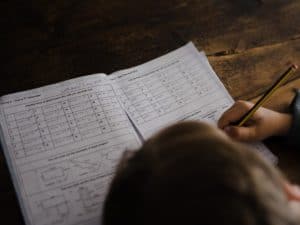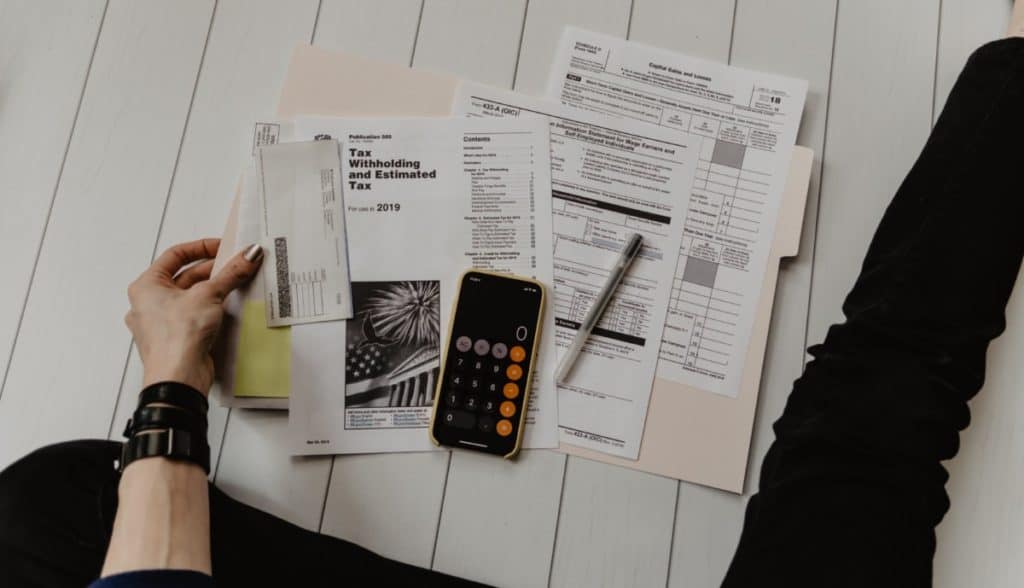Linear algebra: just the sound of the phrase is enough to make some people run to their nearest professor to find out what it even means. It sounds complicated and hard to learn, so we assume that we need hours of class time and a professional to help us get it done. But is it possible to teach yourself linear algebra?
It is possible to teach yourself linear algebra. Some components of this field are more complex and lead us to machine learning; the basics are easy to grasp, even without help. Handling simple equations and finding unknown variables is the foundation of linear algebra and can help you get started.
Learning about linear algebra can be a bit intimidating when you first get started. In this article, we will discuss a bit more about linear algebra and how it works so you can get started teaching yourself in no time.
Can I Teach Myself Linear Algebra?
Like with any other topic you are interested in, it is possible to teach yourself linear algebra and all the parts that come with it. Beware that linear algebra is more advanced and may take more time than other topics to learn on your own.
However, with a little bit of creativity, some good textbooks, and the internet, you can teach yourself the basics of linear algebra. It is a good idea to have some basic knowledge of Algebra I and II before starting to make this a little easier. Any other math experience you can gain ahead of time may make this easier.
You may want to consider finding someone who can answer your questions or looking for local classes on the subject in case you get stuck.
What Is Linear Algebra?
Linear algebra is simply a field of mathematics. It is often agreed to be a prerequisite to understanding more of the field of machine learning. Linear algebra is a big field on its own, with many theories and findings, but with a foundation in the topic, you can learn the relevant parts to handle machine learning.
To be more specific, linear algebra is the mathematics of data. You need to get very familiar with matrices and vectors to understand this field. Many of the tasks we do on a computer that rely on data, whether gathering, sorting, or analyzing the data, will use linear algebra to help get this done. Data runs our world and is responsible for many components of machine learning, so it is helpful to learn.
What Are Linear Equations?

Linear algebra is all about linear combinations too. This means that you will learn how to use arithmetic on columns of numbers known as vectors. You must also work on arrays of numbers known as matrices. You can then use both to create new arrays and columns of numbers.
Since linear algebra is relatively new, being formalized just in the 1800s to help find any of the unknowns in systems of linear equations, there is still a lot to discover with this field. At the most basic form, though, a linear equation is just a series of terms and operations where at least one term is unknown when you start.
How to Write a Linear Equation
The equation below is an example of a linear equation:
y = 4 * x + 1
This equation would be linear because it is describing a line that shows up on a 2D graph. You can create a line when you add different values into the “x” to determine what the model will do to get y.
Writing More Than One Linear Equation
It is also possible to line up more than one equation, using the same two or more unknowns. This would like similar to the following:
y = 0.1 * x1 + 0.4 * x2
y = 0.3 * x1 + 0.9 * x2
y = 0.2 * x1 + 0.3 * x2
When you look at the column with the y values, we can take this as a column vector of outputs in our equation. The two columns with the floating-point values will be the data columns. We can call these a1 and a2, and they will be part of our matrixA. The two unknown values that include x1 and x2 can be taken as the coefficients of your equation. These come together to form the vector of the unknowns that we want to solve.
We would write all of this out with the linear algebra notation below:
y = A . b
While these are simple examples, it is possible to work with linear algebra with many other unknowns. This makes it more complicated to learn. In addition, there is no single line you can draw that will satisfy all equations without some errors.
Systems that describe problems we may have some interest in, including linear regression, may end up with an infinite number of solutions.
Numerical Linear Algebra
Now that we have a little introduction to linear algebra, it is time for us to look at something a little different. We will work a bit with numerical linear algebra, which is the application of linear algebra in a computer.
However, it is more than just implementing the operations of linear algebra in code libraries. It will also include handling problems in applied mathematics carefully. For example, you may use it to work with limited floating-point precision on a computer.
It won’t take long to find computers are good at performing these calculations. Much of the GPUs‘ dependence on modern machine learning methods will be because linear algebra is easy for the computer to work with. Deep learning is an example of what a computer can do thanks to easily computing linear algebra.
Linear Algebra and Statistics

Linear algebra can do a lot of great work in the field of statistics. Some clear areas where statistics and linear algebra combine include:
- Use of matrix and vector notations.
- Solutions to least squares and, in some cases, weighted least squares. This is seen more in linear regression.
- Estimates of the variance and the mean of a data matrix.
- The covariance matrix that will help with Gaussian distributions in machine learning.
- Principal component analysis to help reduce data to more manageable levels.
Where Is Linear Algebra Used?
Linear algebra is used in many different domains. It may be a part of mathematics, but it works in other options like computer graphics, statistics, programming, and even engineering. Some places where linear algebra and knowledge of this topic may be useful include:
- Engineering for matrices, such as a line of springs.
- Markov Matrices for economics to help show off population growth.
- Graphs and networks to help analyze a network.
- Linear programming.
- Signal processing in terms of functions.
- Computer graphics to help rescale, rotate, and translate an image.
Another interesting place where linear algebra could be used was brought forth by Albert Einstein in parts of his theory of relativity. To be specific, in tensors and tensor calculus. Einstein also helped introduce a new type of notation for linear algebra called the Einstein notation, so this brings a lot of hope for how this form of mathematics will be used in the future.
Conclusion
It is possible to learn some of the basics of linear algebra on your own. We looked at a few of the basics that come with this form of mathematics and looked at how to write the equations and how it all works. Some of the more difficult components that lead you into machine learning and deep learning may be a bit harder on your own. But anyone can work on the basics and learn something new!
Sources
- Smithsonian Magazine: This Guy Learned Linear Algebra in Ten Days, and You Can Too
- Machine Learning Mastery: A Gentle Introduction to Linear Algebra
- ZDNet: What is Machine Learning?
- Khan Academy: Linear Algebra
- The Classroom: What is the Meaning of Prerequisite?
- Math Is Fun: Linear Equations
- Wikipedia: Vector (mathematics and physics)
- Wikipedia: Graphics Processing Unit
- Wikipedia: Numerical Linear Algebra
- Wikipedia: Linear Regression






